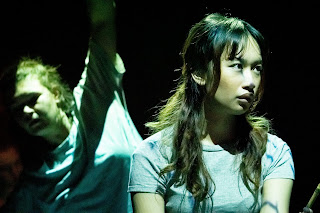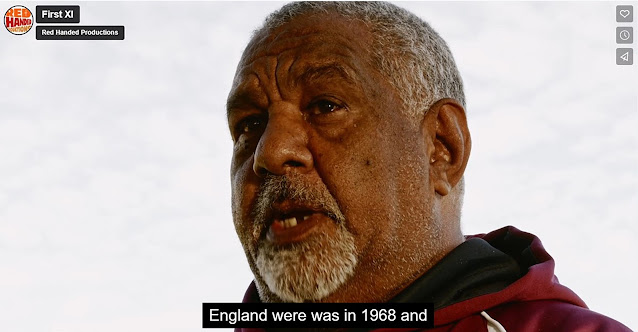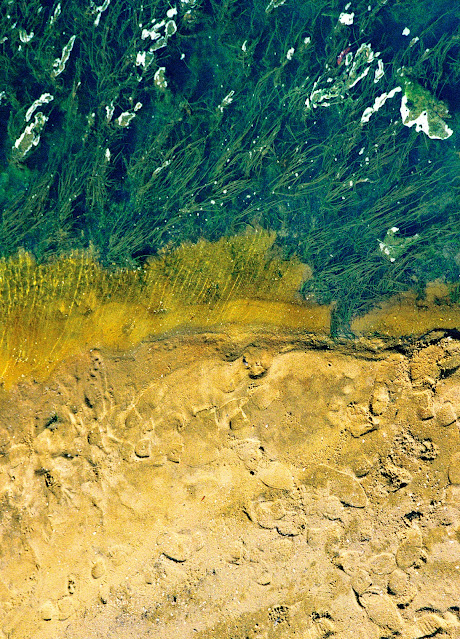 |
| Yolanda Lowatta at Reconciliation Place |
Reviewed by BILL STEPHENS.
AN
invitation from Australian Dance Party to spend half a day “a spectacular art
tour and cruise to make your senses dance” on Lake Burley Griffin was too good
to refuse.
The ADP is an innovative activist dance company which
specialises in creating site-specific performances around Canberra and its environs.
I’ve enjoyed
performances by ADP at Mt. Majura Solar Farm (freezing), Mt. Stromlo
Observatory (charming), a secret warehouse in Fyshwick (sublime) and the
Australian National Botanic Gardens (memorable).
The
company’s newest venture, “Culture Cruise” is the brainchild of its leader and
director, Alison Plevey, who together with her co-director, Sara Black,
developed the concept in which, although dance is integral to the concept, the
cruise is not strictly a dance work but rather an innovative attempt to create a unique
experience weaving together elements of the city’s visual art, architecture,
live performance, food and wine.
 |
| Stefani Lekkas welcomes guest on to the Gull |
After being
checked off and issued with bright orange identity badges, our group was
greeted by host and storyteller, Stefanie Lekkas, who ushered us on to The Gull
and introduced us to the skipper, Captain Jim, who explained that the Gull had been originally
built by its first owner as a fishing vessel, circa 1921 then been converted to
a comfortable 28 seat passenger vessel, powered by electric motors.
Lekkas, in
mystical story-teller mode, focussed attention on the beauty of the surroundings while Captain Jim proffered additional
prosaic and entertaining details about the national institutions we encounter
along the journey, including the Braille tiles on the walls of the National Museum, the renovations
to the Captain Cook water fountain, and those additional bells installed in the
National Carillon.
Once on the
other side of Lake Burley Griffin we disembarked to begin a short stroll to Reconciliation
Place, where the first performance artist, former Bangarra dancer Yolanda
Lowatta, costumed in dazzling orange, focussed attention on the significance
and purpose of Reconciliation Place then beckoned us to follow her through the series
of artworks depicting significant events in First Nations history which
surround the central mound.
On arrival at
the National Portrait Gallery, we were treated to an abstract performance by sound
artist, Liam Budge, and dancers Ryan Douglas Stone and Lowatta, this time clad
in subtle costume designs by Aislinn King. This simple but effective design
device neatly connected all the participants. Remember your badge?
.jpg) |
| Ryan Stone and Stefanie Lekkas outside the High Court. |
After a 40-minute
viewing of the portrait exhibition “Who Are You”, Stone again captivated with
his athletic dance interpretations, firstly of the High Court and later of the National Gallery’s Calder sculpture, before
leading us into with one more dance performance to the Water’s Edge Restaurant for
a leisurely lunch.
Back at the
Gull, Captain Jim welcomed us on board before ferrying us back to the National
Museum where Budge was waiting to serenade us. Following some final farewell
remarks from Lekkas, we headed into the museum for an exploration of the “Great Southern Land”
exhibition.
.jpg) |
| Liam Budge entertains guest at the National Museum |
So does the
Cultural Cruise live up to its promise? Judging on my own experience, it does.
Memorable features included the meticulous attention to detail, providing chairs at the performance points,
and allowing sufficient time to savour the exhibitions.
The performances
themselves were skilful and varied as were the narrations by Lekkas which were
informative, uncluttered, often poetical, and promoting a sense of inquiry
rather than providing answers.
Australian
Dance Party has cleverly subverted a familiar activity into a unique and
satisfying artistic experience perfect for savouring as a personal indulgence,
or as something to share with a friend or fastidious visitor.
More tours scheduled : 25th Feb - 4th Mar.- 11th Mar.-18th Mar. Visit website.
Images Bill Stephens
This review first published in CITY NEWS digital edition of 30th January 2023.
.jpg)












.jpg)
.jpg)
















